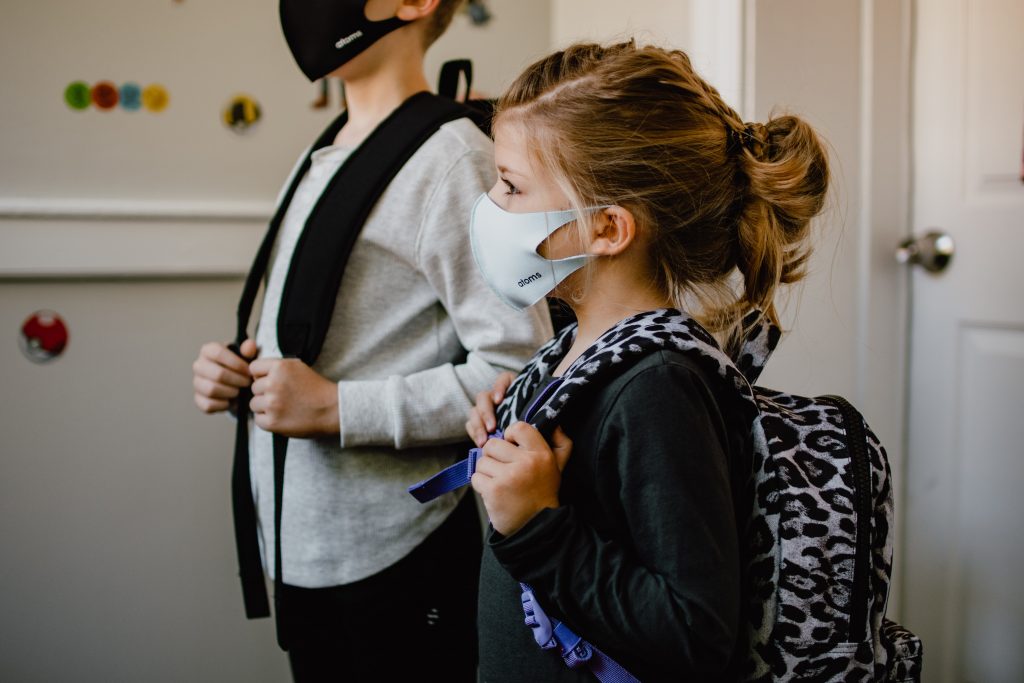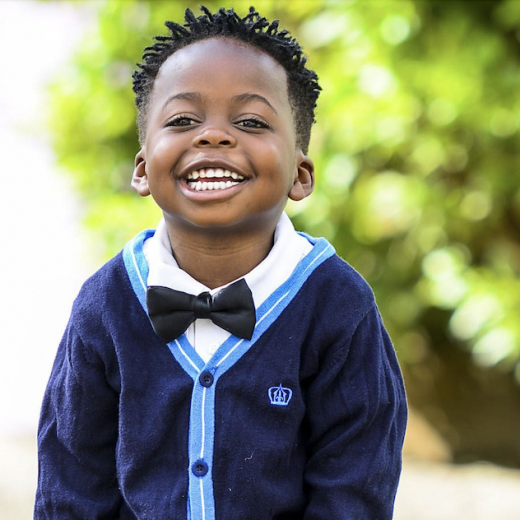Once upon a time we made villains out of certain feelings and blamed mothers for their child’s “sensitive temperaments” and disabilities. Even into the 2000’s as anxiety rates soared to become the most common mental illness, many theories about what caused anxiety and other mental illness seemed to keep missing the mark. We’ve had a very difficult time pivoting away from disproven theories in our desire to understand the origins of mental illness. Yet, many are also starting to catch on to something caregivers have always known— that childhood anxiety almost always has an impact on, not just the child, but all those around them as well. In fact, if you’re the caregiver of a child with anxiety then you know full well that your child’s anxiety is most definitely a family issue.
How Anxiety Serves
To state the obvious, our society has a history of valuing some feelings more than others. Happiness has often been seen as the crème de la crème emotion. It’s also often confused for a lasting condition rather than the temporary state it actually is. The truth is feelings aren’t “negative” or “positive.” But many of us have often made the mistake of slapping those labels onto emotions because we don’t particularly like feeling some of them. Feelings are also temporary. It’s simply not possible to feel happy all the time. Seeking permanent happiness overlooks the helpfulness of other feelings and the transient nature of our feeling states.
While anxiety has gotten a pretty bad reputation, the associated states of worry and fear serve very useful purposes. These feelings motivate us! Worry in measured doses will encourage us to put on sunscreen or to prepare for the job interview. If we’re being chased by a bear, fear will kick the body into action by getting the sympathetic nervous system into high gear. This system is the body’s survival instinct! It will automatically do things like make us breathe faster so we can get more oxygen pumping to our crucial organs and dilate our pupils to ensure that we don’t miss anything in our visual field.
The kids who come to see me at Intuition Wellness can recite the benefits of their feelings backwards and forwards because I introduce this conversation early on. It’s how I help them unpack the messaging that they’ve received from our society about feelings being either “bad” or “good.” We often talk about how various feelings have served them over time. Through this, however, it’s also important to remember a couple of tricky and key points about anxiety.
How Anxiety Dis-Serves
Though worry and fear can certainly serve us and our children well, all of us need to remember at least two important points when it comes to anxiety, particularly with children:
- Sometimes our bodies turn on worry or fear even when it’s not helpful. Our bodies are not malicious, but they are prone to occasional mistakes. Sometimes the alarm goes off and survival instincts kick in when they aren’t needed. This alarm bell can also be accompanied by what I like to call “sticky thoughts.” The way that I describe these are as those thoughts that just keep coming back, tend to trigger anxiety and don’t respond all that well to rationality. An example is of a child who is old enough to know theoretically that there isn’t anything ominous lurking under their bed, but who struggles with great fear at bedtime regardless and no amount of reminders that they are safe seems to be enough.
- Childhood anxiety is meaningfully different than anxiety experienced by adults. As mammals, our children are biologically designed to seek the safety of a caregiver when there is a threat or a perception of a threat. From an evolutionary perspective, this is a strategy that has been critical to our survival. As children get older and are increasingly capable of protecting themselves from threat, safety-seeking from the caregiver usually decreases. Yet, a child who is battling a case of sticky thoughts may also continue to seek reassurance and/or accommodation from their caregivers in situations in which a threat is perceived, but not real.
What Anxiety Deserves
It’s worth re-stating that anxiety and it’s two buddies— fear and worry— are not bad. This is true even if they feel like the enemy. Yet, we can create a relationship with anxiety that isn’t so conflictual by making efforts to understand it and what it’s trying to communicate. When we do so, often we can co-exist with it in an empowered way and it usually doesn’t have to get so loud for us to listen to it. As a parent watching a child struggling with anxiety though, it can really feel overwhelming.
Many parents have described a feeling of helplessness when their child is battling big anxiety that returns often. Most have tried reassuring their child of safety many times. Many parents find that this either doesn’t work or only seems to work briefly before that pesky anxiety shows up again. A lot of good parents have also worked hard to find solutions for their child and accommodate them in order to ease the intensity of the anxiety, but found that this doesn’t always work either or simply isn’t sustainable. In fact, many parents are finding that they are working SO hard to support their child in these instances that they are getting depleted. For the parent, who doesn’t get enough sleep at night because they are doing their best to support their wakeful child or for the parent who has repeatedly rearranged their work schedule because their child is struggling with anxiety about going to school in the morning— I see you. And this is how I know that your child’s anxiety is a family issue. It’s impacting YOU, too. In order to counter that sense of helplessness, I have three tips to empower you and your child!

Three Empowered Responses to Pesky Anxiety
- Listen to your child. When they come to you because anxiety has shown up, before doing anything else, you must communicate to your child that you are listening. Validate them and how hard it is to feel what they are feeling. This doesn’t have to be a long drawn out conversation. In fact, it could be just a few words. For example: “Anxiety is really uncomfortable” or “It’s really hard to feel that way.” An empathic response keeps the lines of communication open with your child and makes you approachable, which is an excellent goal to have as a parent.
- Believe in your child’s ability to do hard things. By exuding confidence in your child, you are helping to empower them to face uncomfortable feelings, challenge themselves and even fail and learn from those failures. You’re essentially saying: “I know you can handle it. When we partner up listening (#1 above) with confidence we get a winning formula articulated by Dr. Eli Lebowitz, of Yale’s Child Study Center, who developed a novel treatment for childhood anxiety and OCD called Supportive Parenting for Anxious Childhood Emotions (SPACE). Per Dr. Lebowitz, a key tool for parents in the SPACE program (and I would argue a key tool for parents period) looks like this:

…and sounds something like this: “I know that this anxiety you’re feeling is really uncomfortable and I also know that you can handle hard things.” For a really pared down version: “This is hard and you can do it!”
- Re-evaluate before you accommodate. Creating an atmosphere of listening and confidence is a great first step. However, sometimes it may not be enough. After all, sticky thoughts are called “sticky” for a reason and, for some kids, anxiety can be a repeat visitor. In this instance, remember that our actions really do speak louder than our words. If we say that we’re confident in our child’s ability to do hard things and then don’t allow them the opportunities to do so then we’re really sending a mixed message. In roughly 95% of anxious children, this family issue of anxiety has morphed into something Eli Lebowitz calls family accommodation. That is, in our efforts to ease the anxiety for our children we have responded by changing our own behavior— by doing something extra. Again, as mammals, parents are hardwired to want to keep our children safe. Even we can get tricked by our children’s malfunctioning alarm bell and forget that they aren’t in real danger. Perhaps we don’t have to lay with them until they fall asleep each night or perhaps we don’t have to drive them to school each morning because they get anxious on the bus. All I’m suggesting here to start is to take a close look at the things within our control as parents and evaluate whether we might modify our behaviors to give our kids the chance to prove to themselves that yes, they really can do hard things.
A Deeper Dive Into Family Accommodation
That last tip is sort of packed one, so let’s unpack it just a little more. A change in our behavior, or accommodation, can truly be helpful sometimes. For a child who is struggling to get to school because anxiety is tricking them into thinking they aren’t safe, creating an accommodation that allows them to feel a little safer might be a good idea in some cases. For example, having them transition into their school day by starting in a comfortable room at school just might be a step in the right direction if previously it was hard to get them there at all. Yet, Dr. Lebowitz’s research is pretty clear that a decrease in anxiety has also been linked to a decrease in family accommodation. The big takeaway regarding family accommodation is to look closely at what we’re doing— the extra things— in response to the anxiety that we’re seeing in our children. Once we’ve identified them, then we can determine if we can take out some of those extra things. This is especially important if they’ve really become a family issue and certainly if they don’t feel sustainable to you.
While looking at the ways that we are accommodating anxiety, we aren’t focusing on the anxious child’s behavior at all. After all, we can’t control their behavior, but we can control our own. That’s why it’s so empowering to work from this angle. If you’re a parent of a child with anxiety then you know full well that convincing them to change their behavior in response to anxiety can be very difficult. Of course! Their alarm bells are going off and they’re in survival mode! It’s also empowering to look at it from this angle because many times those accommodations have been really hard on us— the parents— and they just aren’t sustainable. While it may be hard for our child when we let go of some of these things, it’s another opportunity to let them prove to themselves that they can do hard things!
For more information on the SPACE model of treatment, I highly recommend visiting the SPACE website where you can even find a parent forum. Dr. Lebowitz’s most recent book, Breaking Free of Childhood Anxiety and OCD, is also a helpful overview!
At Intuition Wellness Center, we specialize in health and wellness services for children, young adults and families. If you think you would like some extra support, we’re here for you!


